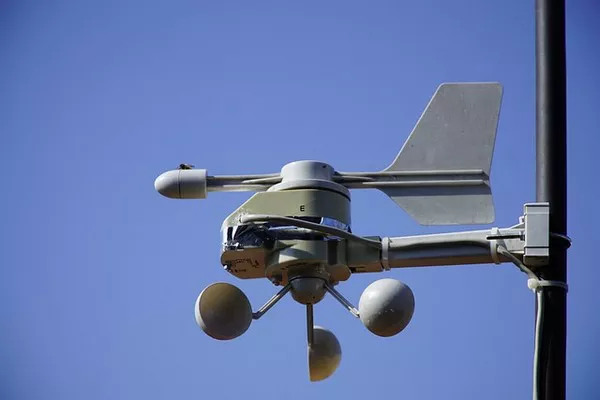Fluid dynamics, a cornerstone of modern engineering and scientific research, deals with the behavior of liquids and gases in motion. Precise measurement of fluid flow is crucial across various industries, from aerospace and automotive engineering to meteorology and environmental monitoring. In this realm, an essential tool is the hot wire anemometer. This article aims to delve into the workings, applications, and significance of hot wire anemometers in fluid dynamics.
What is a Hot Wire Anemometer?
A hot wire anemometer is a device used to measure the velocity of a fluid, typically air, based on the principle of convective heat transfer. It consists of a thin wire (usually platinum, tungsten, or nickel) suspended in the fluid flow. The wire is electrically heated to maintain a constant temperature higher than that of the fluid. As the fluid flows over the wire, it carries away heat, causing a change in the wire’s temperature. By measuring this change, the velocity of the fluid can be determined.
How Does it Work?
The operation of a hot wire anemometer relies on convective heat transfer, where the heat transfer coefficient is directly related to the fluid velocity. When the fluid flows over the heated wire, heat is transferred from the wire to the fluid, leading to a cooling effect on the wire. This cooling effect is directly proportional to the velocity of the fluid, according to Newton’s cooling law.
The wire’s temperature is maintained constant by passing an electric current through it. The current required to maintain this temperature is directly proportional to the velocity of the fluid, making it a measure of the flow velocity. By measuring the electric current needed to maintain the wire’s temperature, the velocity of the fluid can be accurately determined.
Type of Hot Wire Anemometers
Hot wire anemometers come in various configurations to suit different applications and measurement requirements:
Constant Temperature Anemometers (CTA): In CTA, the hot wire’s temperature is kept constant, and the electric current required to maintain this temperature is measured. Changes in the current correspond to changes in fluid velocity.
Constant Current Anemometers (CCA): CCA maintains a constant current through the wire, and the voltage required to maintain this current is measured. Variations in voltage indicate changes in the wire’s cooling due to fluid velocity.
Constant Voltage Anemometers (CVA): In CVA, a constant voltage is applied to the wire, and the resulting current is measured. As with CCA, variations in current indicate changes in fluid velocity.
Advantages of Hot Wire Anemometers
Hot wire anemometers offer several advantages over other flow measurement techniques:
High Sensitivity: Hot wire anemometers can detect very low flow velocities with high sensitivity, making them suitable for precise measurements in various applications.
Fast Response Time: These devices have a rapid response time, allowing real-time monitoring and analysis of fluid flow phenomena.
Wide Measurement Range: Hot wire anemometers can accurately measure a wide range of flow velocities, from extremely low to supersonic speeds, making them versatile instruments.
Non-intrusive: Unlike some other flow measurement techniques, hot wire anemometers are non-intrusive, meaning they do not significantly disrupt the flow being measured, making them suitable for a wide range of applications.
Applications of Hot Wire Anemometers
Hot wire anemometers find applications in various industries and research fields:
Aerospace Engineering: In aerodynamics research and aircraft design, hot wire anemometers are used to measure airflow over wings, airfoils, and other aerodynamic surfaces to optimize performance and efficiency.
HVAC (Heating, Ventilation, and Air Conditioning) Systems: These devices are employed to measure air velocity and flow rates in HVAC systems to ensure proper ventilation and thermal comfort in buildings.
Turbomachinery: Hot wire anemometers play a crucial role in the development and testing of turbomachinery, such as turbines and compressors, by providing accurate measurements of airflow velocities and turbulence.
Environmental Monitoring: In meteorology and environmental science, hot wire anemometers are used to study atmospheric dynamics, boundary layer phenomena, and air pollution dispersion.
Fluid Mechanics Research: Hot wire anemometers are indispensable tools in fluid dynamics research, aiding in the investigation of turbulence, boundary layer flow, and flow instability phenomena.
Challenges and Limitations
While hot wire anemometers offer numerous advantages, they also have some limitations and challenges:
Temperature Sensitivity: Changes in ambient temperature can affect the accuracy of measurements, requiring temperature compensation techniques to maintain precision.
Fragility: The thin wire used in hot wire anemometers is delicate and can be prone to damage if mishandled, necessitating careful calibration and maintenance.
Flow Disturbance: While non-intrusive, hot wire anemometers can still cause minor flow disturbances, especially in low-speed flow measurements, potentially affecting the accuracy of results.
Calibration Requirements: Regular calibration is essential to ensure the accuracy and reliability of measurements, adding to the operational complexity and cost of these devices.
Future Developments and Innovations
Advancements in materials science, electronics, and computational techniques continue to drive innovation in hot wire anemometry. Future developments may focus on:
Miniaturization: Smaller, more compact hot wire anemometers for applications in microfluidics and portable measurement systems.
Integrated Sensors: Integration of additional sensors for simultaneous measurement of temperature, pressure, and flow direction, providing more comprehensive fluid dynamics data.
Wireless Connectivity: Incorporation of wireless communication capabilities for remote monitoring and data logging, enhancing the convenience and accessibility of measurements.
Advanced Data Analysis: Implementation of advanced signal processing algorithms and machine learning techniques for real-time analysis and interpretation of flow data.
Conclusion
Hot wire anemometers are invaluable tools in fluid dynamics research, engineering, and environmental monitoring, offering precise and reliable measurements of fluid flow velocities. Despite their challenges and limitations, ongoing technological advancements promise to further enhance their capabilities and broaden their applications. As our understanding of fluid dynamics deepens and the demand for accurate flow measurements continues to grow, hot wire anemometers will remain indispensable instruments at the forefront of fluid flow analysis and experimentation.

